Knowing when it’s time to change your mattress is important to your health for a variety of reasons. Review this list to decide if it is time to replace yours.
Even the highest quality mattresses get tired, and that is why it is extremely important to plan ahead when it comes to mattress purchases; you want to ensure that you get the right one and that you start preparing in advance for its inevitable end. They are a pretty major expense in most households, and sometimes you may not feel like anything is wrong but your bed and body are screaming at you that it’s time. Replacing your mattress is important for many reasons. The mattress can simply wear out and not be providing you with adequate support anymore, lifestyle and body changes might affect your needs in a mattress, and worst of all is that your mattress becomes home to dead skin, dust, bodily fluid, and more. Cleaning your mattress only takes you so far though, because some reports say that a mattress can double in weight over the course of a decade because of all the matter that it accumulates.
Mattresses are designed to last between 5 and 10 years but the general rule that experts suggest that you follow is “replace every eight.” The good thing is that this gives you plenty of time to think about what your needs are in a mattress, research, and budget so that when the time comes, you’re prepared. But, the problem with general rules is that they don’t apply in every case; there are plenty of warning signs that might tip you off that it is time to go ahead and change mattresses. Here, you’ll read about 15 funny but true signs to look out for to know that the time has come.
It Has Outlasted a President
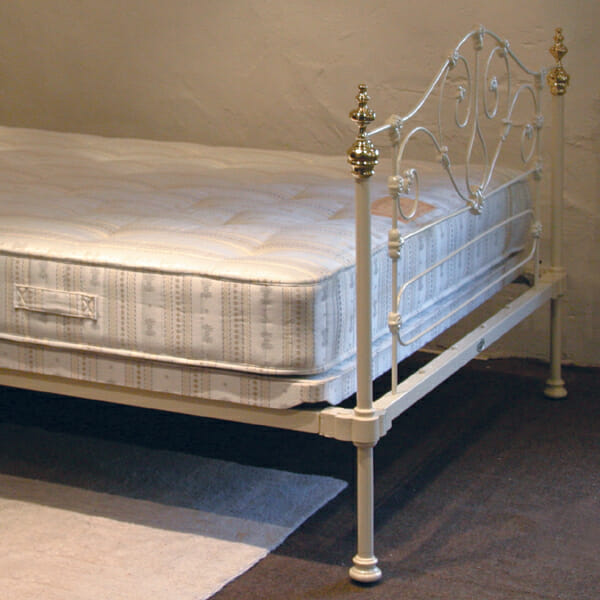
The rule of replacing a mattress every eight years comes from the mattress industry, so maybe you don’t feel like that’s a trustworthy guideline. The National Sleep Foundation and the Sleep Council both agree that a mattress should be replaced in about that timeframe. The lifespan of a mattress is going to vary widely based on your lifestyle and maintenance of it, and people usually think that it’s only time to replace it when it gets worn out. While it is true that it will begin to lose its structure (which leads to poor weight distribution, ultimately causing body ache, restlessness, and chronic sleepiness), there are some more issues associated with keeping a mattress too long.
Mattresses age, simply. Over time, they lose their ability to support your body, they get noisy, and they lose their ability to reduce motion transfer. Even adding a mattress topper after a bed has lost enough of its bounce can’t bring it back. There are a lot of gimmicks out there that are designed to make you spend more money on a product that you don’t need, but this rule isn’t one of them. Eight years is a pretty generous estimate, too, because Oklahoma State University concluded in a study that the majority of people who changed their mattress after just five years reported improved sleep and reduced back pain.
It’s Full of Uninvited Guests
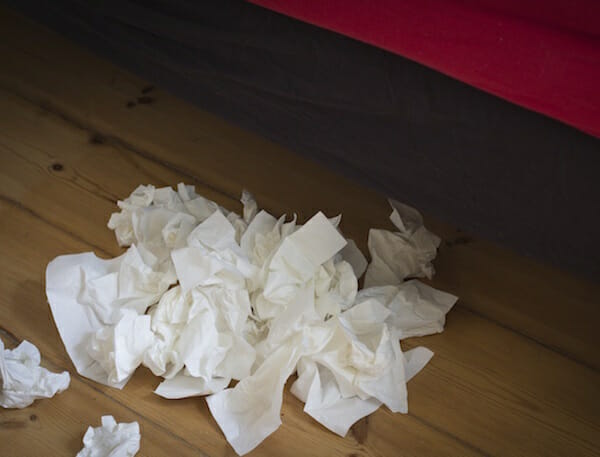
Your mattress is probably covered by sheets and blankets most of the time, so it is easy to forget about what’s really going on under there. What was once one of your safe havens from the daily grind has become a safe haven to some unsavory guests as well. Mattresses as they age become home to a host of icky things, which is perfectly natural. But, if you don’t replace your mattress as often as necessary, you are crawling into bed with allergens, dead skin cells, dust mites, germs, sweat, and perhaps even bedbugs. Even if your sheets are regularly clean, and you use a mattress protector, this will happen. Mattress protectors guard your mattress against dirt and spills but they don’t create a barrier for things like germs, dust, oil, moisture from the air, dust mites, etc.
Clean sheets are still important, but not even they can help an aged mattress. Did you know that over the course of a year, humans typically shed over ten ounces of dead skin while they sleep? You also sweat in your sleep (some research says a liter per week), which adds to the weight and contributes to keeping a warm moist environment inside the mattress. Ohio State University would like you to know that a typical used mattress may have 100,000 to 10 million mites inside. Mattresses are built to accommodate all of these unwelcome substances, but sometimes, evicting the dust mites early will lead to better sleep and better health.
You No Longer Have Separation Anxiety From It
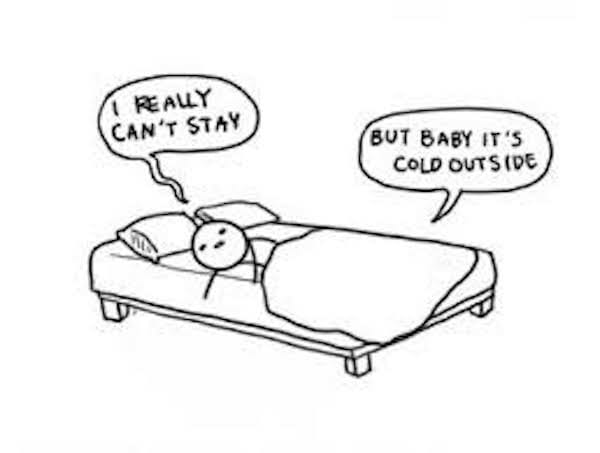
The sun has only just pulled itself up over the horizon casting a warm golden glow into your window, your body heat has created the perfect temperature inside your cocoon of blankets, and Marimba is blaring out of your iHome. You can’t remember how many times you’ve already hit snooze, it doesn’t matter, you’re so comfortable right now that time doesn’t exist. Monday can wait. Weren’t those the days? If you find yourself eager to get out of bed in the mornings simply because it isn’t comfortable anymore, that is a telltale sign to quite literally kick it to the curb (but preferably you’re local recycling center). Your bed used to be one of your favorite places in the house, you made it up nice and neat so that it would be your sanctuary after a long day but now it’s just… there.
Clinomania is a hallmark of some severe problems, but an honest and deep love for the mattress you sleep on is important. You spend a third of your life in bed, and having a comfortable mattress is key to maintaining good health. A worn out mattress that you just don’t feel the love for anymore is not a good place for you to sleep. Your alertness, day-to-day energy, mood, motivation, and so much more can be tarnished by a poor night’s sleep. So, if you’ve found that your bed just isn’t the friend that it used to be, it might be time to part ways and move on to bigger and better things.
It Creaks Like an Old Wooden Floor
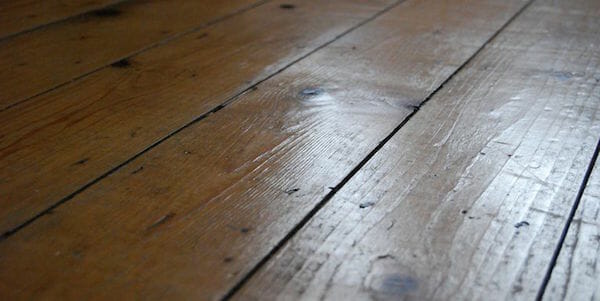
There isn’t a sound more obnoxious than your mattress narrating your every move in all its strident glory. The sound can disturb you while you or someone else in the bed is adjusting positions during sleep, and it points to a more profound problem. When your mattress gets to the point that it cries out every time you look at it wrong, what it’s really saying is: Please send me to the big Mattress Firm in the sky. The creaks are caused by worn out, defective, or broken springs. Springs just lose their spring over the years as you use a mattress, and this makes it so your bed isn’t providing you with adequate support anymore. Springs also need to be lubricated sometimes, but some older or cheaper models don’t really allow you a way to do that without taking the mattress apart. Also, it can be tricky to isolate the spring and repair it. At that point, the best course of action may just be to let your mattress have its way… right out the door.
Another thing that causes a mattress to creak is being off-center or unbalanced. Over time as you sleep on your mattress, it will naturally change shape and warp. The awkward angle that this creates can make it so there is no real solution to the sounds. When the springs are bent out of shape, it can cause one to snap and jut into your body, causing a lot of discomfort. The most important thing about a noisy mattress, or just a noisy spring, is that it can almost be guaranteed that if the inner coils are worn that much then there is no way your bed is providing you with sufficient support anymore. Anywhere that springs are weaker, there is going to be less support, leading to weight distribution problems, and even if you can’t physically feel it every night while sleeping, soon enough, you will feel its wrath when awake.
You Also Creak Like an Old Wooden Floor

When your mattress has just seen too much, it won’t take care of you the same way that it used to. It will lose its firmness and ability to support and contour your body, which can make your body ache. If you find yourself groaning and cracking when all you’re trying to do is start the day, this is a good sign that your mattress just isn’t making the cut. Back pain is extremely prevalent, with as much as 80% of Americans experiencing it at some point in their lives. The American Chiropractic Association asserts that 31 million people across the nation are experiencing back pain as you read this. When something is so widespread, people tend to just accept it as the norm.
The truth is that a mattress in need of replacement can be the culprit, and taking action on that could drastically transform your sleep and your life. Google conjures up over half a million results in under one second when you search for ‘back pain mattresses.’ The correlation between an improper mattress and chronic back pain and body aches is well-established, but it isn’t something that many people take heed to. A good mattress helps keep your spine aligned and doesn’t put all your weight on your pressure points, an old one struggles to do that.
It’s Starting Look Like Holiday Mashed Potatoes

A bowl of miracles, that’s what mashed potatoes truly are. But, when your mattress starts to take on the shape of some lumpy buttery starch, it doesn’t provide you with the same joy. Even higher-end memory foam mattresses can exhibit this unruly behavior where the padding inside your mattress just doesn’t want to straighten out. Sometimes colder temperatures can stiffen padding inside a mattress and keep it from returning to normal and other times it can just be that the padding has worn out and is too fragile. It can tear inside the mattress and shift around, moving your mattress can cause the material inside to revolt as well. There are many things that can lead to lumps, but it all comes down to the padding playing games with your spine.
Pillows, mattress toppers made of memory foam, pillow tops, and other similar accessories also get lumpy over time. Rotation on a regular basis (not flipping) can help keep the guts of your mattress evenly distributed. If the cover can be removed and washed, this is also an option. However, the “best” ways to handle lumps are to beat them into submission over a clothesline, spreading it all back out or to “act as a human rolling pin to roll away those mattress lumps.” While these can be nice short-term solutions, the bottom line is that these problems will only get worse and harder to fix with time.
It Feels Like A Cheap Island Vacation
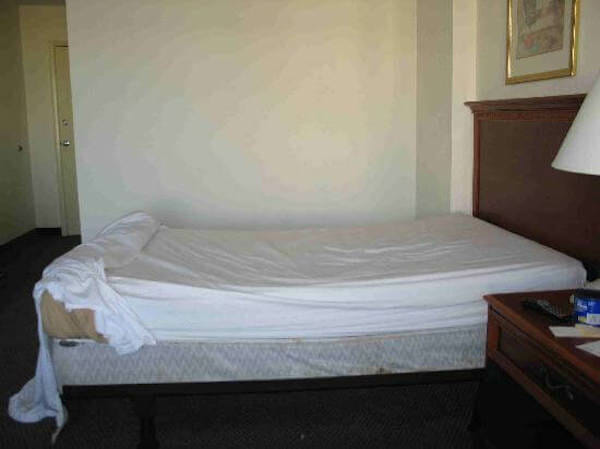
You’ve always dreamed of how peaceful it would be to just laze around the beach all day in a hammock, soaking up all the sun, waves, and tequila that your vacation destination had to offer. Hammocks are very comfortable, the banana-like position that they put you in kind of stretches your body out in a way that helps relieve tension. It’s a very chill position, but “chilling” isn’t exactly want your body to do through the night. Sleep is meant to be restorative, and any positions that put undue stress on the body are going to interrupt that process. A co-founder of the Texas Back Institute echoes that sentiment in saying that the position can be comfortable but it doesn’t support the natural S-shaped curve in our spines.
Mattress firmness is something that the jury is still out on, but a mattress that is too soft or has lost its firmness with age is universally regarded as a no-go. The idea of sinking into a fluffy bed at the end of the day is a divine one; actually sinking into a bed that dips drastically like a hammock would is a sign that it’s too worn out to be rescued. If you keep sleeping that way, it will wear you out as well and lead to poor sleep quality, new or exacerbated lower back pain, and also that pesky dent that warps the pattern on your comforter when the bed is made so it just doesn’t look right. It’s all annoying, and once you start sleeping better, you’ll have the energy to work towards an actual beach vacation instead of a sad saggy mattress.
You Snooze, You Lose

Have you ever noticed that when you have a really rough day or you just don’t feel right, your instinct is to just take a nap? This human variant of “have you tried turning it off and then on again?” actually has a very logical basis. The purpose of sleep is to let your body do a lot of important “housekeeping” to restore and sustain your physical and mental health. Lack of sleep makes your brain cloudy, makes you forgetful, and sours your mood. Long-term lack of sleep, or what is known as sleep deprivation, increases your risk of diabetes and heart disease, can lead to weight gain, a weakened immune system, mood swings and chronic difficulty focusing, just to name a few. Driving while tired is proven to be just as bad as driving while intoxicated. Improper rest causes poor judgment and has been linked to catastrophic disasters like Chernobyl. Restorative sleep is imperative to your ability to function and to your health.
This is so important because a mattress that has overstayed its welcome isn’t going to allow you to enter the deeper stages of sleep and allow you to get the rest and restoration that is essential to your ability to survive and thrive. If you lay down for a normal night’s sleep on your old mattress, it is very likely that you won’t wake up feeling rested. It is true in this case that if you snooze on a bad mattress, you lose (out on the opportunity to wake up feeling energized and ready for the day ahead).
You’re a Little Too Close to Their Morning Breath

The warmth of the sun on your face when you just wake up is enough to make anyone feel like they can take any and all that the world throws their way for the next 24 hours. The warmth that you don’t want to wake up to is someone’s breath in your face; whether you sleep with a partner, a friend, a pet, or George Clooney… it isn’t appealing. If you find yourself rolled to the middle of the bed with whoever is in it with you, this can be caused by two things: severe sagging, like the hammock effect in a different direction, but for this purpose, a worn out mattress can’t effectively reduce motion transfer. Motion transfer is what happens when someone moves in bed, and everything else moves with it as the mattress bends to accommodate the shifting weight.
Motion isolation has been a staple in the marketing strategies of big name brands far and wide, commercials abound with people jumping on the bed with a glass of wine that barely moves. This is a cool feature to show off, but the ability to isolate motion is incredibly important for anyone who shares a bed. Whenever your bedmate moves (tossing and turning, kicking, getting up to get a drink, or perhaps they just get up earlier than you do), you’re going to fall victim to the mattress’ wiley ways and end up wherever it shifts you. This also happens when your mattress is so structurally compromised that it can’t support you or your bedmate’s bodies, so you both sink to the lowest point. This is one of the worst things that happens in the life cycle of a mattress, and it’s a clear call to cut it short.
You Can’t Remember What Color it Was
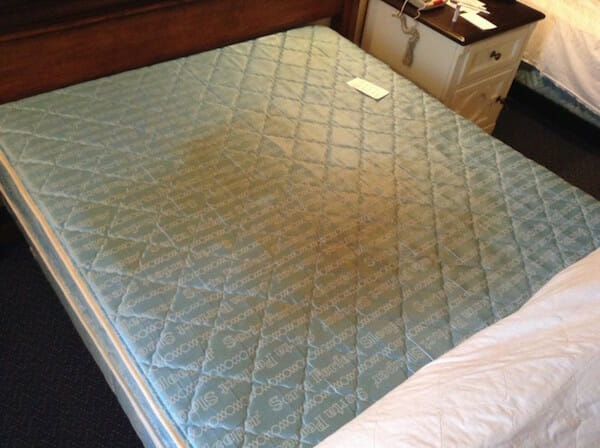
Maybe, hopefully, this is an exaggeration. But, maybe it isn’t. Even with a mattress protector, regularly changed sheets, and all the good intention in the world, mattresses get stained and discolored over time. From sweat, any other bodily fluids that come in contact with it, moisture in the air of your home, nicotine for those of you who smoke indoors, and more. Bad stains happen to good mattresses, but if the whole thing is giving off the vibe of “these were white when I bought them,” it’s time to move on. As you read above, your mattress is harboring some fugitives, and if it is discolored that is a solid indication that it is too old, or that it is a hotbed of germs that you don’t want to cozy up with every night.
Holding on to a mattress that just looks funky is asking for trouble. You might notice that your usual seasonal allergies have taken up permanent residence in your sinuses, or perhaps you just wake up stuffy. What is going on is that not only is your bed a place where allergens go to live out the rest of their days torturing your respiratory system, a mattress that is heavily stained or discolored is one that has probably been exposed to too much moisture (which is what allows stains to seep in to the fabric and beyond). Moisture feeds the nasty stuff that your mattress typically collects over the years and makes it worse, and too much discoloration can be a sign of water damage or even mold on the inside. If you can breathe easier, you’ll sleep easier, and a new mattress might be a good investment to make.
It Smells Like Your Gym Bag

This one ties into the last one, and it may not be extremely prevalent all of the time. Detergents, scent boosters, Febreze, candles, and even the way you smell can all mask this one most of the time. However, if when you’re airing out your room after dusting or putting on fresh sheets and something just smells off, it could be the smell of your mattress. Even innerspring mattresses feature some foam padding, and all mattresses regardless of their composition usually have a fabric covering. The padding of a mattress is especially porous, so it will take in moisture from the air and it is susceptible to absorbing body odor as you sleep, cooking smells when the door is open, etc. When a mattress gets too old, it just gets this damp and unpleasant smell to it.
This doesn’t mean you’re particularly gross or dirty, it’s natural. Mattresses have components that are prone to absorbing smells, and those smells like to hide out in the crevices of your mattress where you can’t quite clean. Cleaning and deodorizing a mattress with store bought products or with DIY deodorizers like vinegar and baking soda does work, but after a certain age, the odor will just sink into the bed and become even more difficult to remove. Sometimes after a move or a period of storage, your mattress can take on a musty or mildew-like scent. Mattresses can be deep-cleaned, and they should be, but a lingering nasal malaise isn’t something that is going to help you sleep well at night or compliment your favorite bedside candle.
You Find Yourself Wanting to Visit the In-Laws More Often
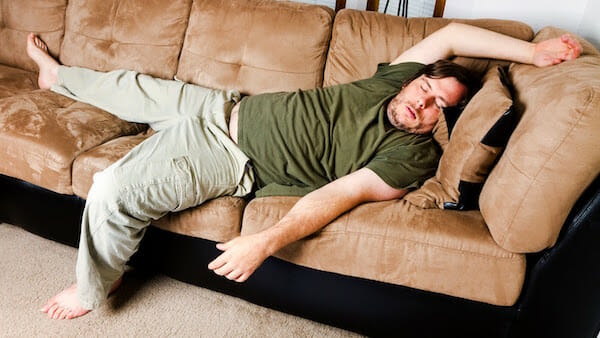
Perhaps it isn’t that serious quite yet, but if you start to notice that you’d rather sleep in the guest room, on the couch, in the floor, or your desk at work, your body is trying to tell you something. Sometimes you’re so tired that you can just crash anywhere, but that isn’t the same. If you find yourself seeking out other places to sleep at night, or even just to nap during the day, you should think about why you’re avoiding your bed. Perhaps it makes you feel stiff and sore, perhaps it’s too loud, perhaps it just isn’t doing it for you anymore; there are many things that could contribute to you preferring to sleep in places other than your bed but the reality of those things is the same across the board: If you would rather sleep someplace other than your bed, then it is time to invest in one where you can be comfortable, have plenty of room, and get plenty of rest.
Another indicator of this is that when sleeping away from home in an unfamiliar setting, you’ll be exposed to different sights, sounds, smells, and so on but you sleep better there than you do at home. It is natural to have trouble sleeping in an unusual environment, even if you’re perfectly comfortable there. The bottom line here is that if somewhere other than your own sanctuary of slumber at home sweet home has more appeal, then you should examine your mattress and see if that is what makes you feel that way. As you’ve read before, you spend an estimated 33% of your life in bed; also, beds are fairly pricey and long-term investments for many people, so you deserve to get the one that is going to give you the most comfort. A bed that you don’t even want to sleep in is one that you need to consider replacing.
The Box Spring Moans More Than You Do

The American Journal of Obstetrics and Gynecology found that sleep disturbances are linked to a diminished sex drive, in 2007. Not too long after, additional research published in the Journal of Sexual Medicine found that sleep-deprived women were 14% less likely to engage in sexual activity. Lack of sleep has been linked to making people dumber, as well, just a heads up. Drastically-lowered libido is a symptom that could be easy to misattribute to something else, or even to just brush off as normal fluctuations due to other areas of life taking more precedence. The University of Chicago found that not getting proper sleep lowers testosterone levels and the American Journal of Epidemiology concurred, their own study showing that those who haven’t gotten enough sleep will experience lower sperm counts. Improper sleep is also linked to depression, increased cortisol levels, and a weakened immune system, which can all put a bump in the road towards your bump and grind.
Most hormone secretion is dictated by your body’s natural sleep cycles, and hormones play a key role in many aspects of your wellbeing. Not getting restful sleep, and even sleeping in a bed (or room) that’s too warm can have these adverse effects. As with any health issue, it is important to go over concerns with your doctor if they’re disruptive to your life. But, maybe a mattress that is better suited to sweep you away to dreamland and keep your body cool could be the answer if this is something that you are dealing with. Many mattresses are specifically designed to promote cooling airflow, and designed in such a way that they don’t hold body heat. If you’re chronically unable to get the proper zzz’s, you won’t be able to enjoy (or even participate in) your xxx’s as much.
Your Skin Reminds You of Your Teenage Years

Poor sleep causes stress hormones to throw a rave, they love it when your body doesn’t sleep because that sets them free to cause you more unnecessary stress and all the ugly health problems that come with it. Cortisol is important to our health, but too much of it isn’t going to help your body. Higher levels of this hormone are caused by stress, which can be caused by poor sleep; what higher levels of this chemical will do is promote systemic inflammation, which can promote wrinkles, loss of skin firmness and elasticity, dull skin, and even itchy chronic conditions like eczema. The Journal of Chiropractic Medicine found that most people were sleeping on a mattress that had surpassed its suggested expiration of 8 years (the average was 9.5 years old) and that upon switching to a new mattress, two things happened: better sleep, and lowered stress levels.
Another thing about your mattress that can leave you jonesing for Clearasil is the germs that it harbors that you’ve already learned about. Sebum, which is the oil your body produces can settle into your mattress with its friends, dead skin, sweat, dirt, body hair, and dust; these things can transfer to your skin and cause problems. Proper maintenance of your sheets, pillows, and mattress can obviously prevent this from happening but there is a point of no return that your mattress can reach. If you notice that no matter what you seem to do, you’re struggling with your skin more than usual, take a closer look at your mattress. Thanks to constant strides towards healthier and cleaner human beings, there are mattresses on the market that are antibacterial or antimicrobial to discourage the funk that has too much fun in the depths of your bed. There are also sheets, pillows, and mattress toppers with the same quality. If your skin is something you struggle with, maybe a new mattress can provide you with a solution. You’ll sleep better, reducing the cortisol that’s exacerbating the problem, and you can keep bacteria at bay.
It’s Not You, It’s Me
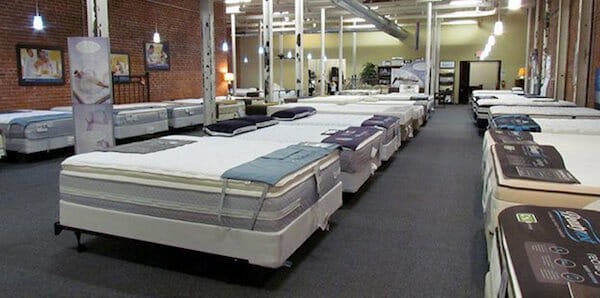
Sometimes when The Sandman is giving you the cold shoulder, it doesn’t really have anything to do with your mattress being old or dilapidated, it really just might be you. The mattress could be fine but body changes such as weight loss or gain, a pregnancy, an injury, age, and so on could be the gatekeepers of your 40 winks. Your sleep style, personal needs and preferences, and your body are all going to change over the life of your mattress, and you may just have to break up with it before its time has come. The Better Sleep Council says that “everyone’s body changes over time and your need for comfort and support increases as you age,” and that “it’s a good idea to compare your mattress and foundation to newer models every few years to see if there is a set that feels better to you and offers features you may not have needed or looked for in the past.” While some companies assert things like this to drive sales, there is truth in that.
The Better Sleep Council, for instance, is the consumer-education arm of the International Sleep Products Association. They have been continuously committed to keeping the public informed about how critical sleep is to their health and quality of life since 1978. If there is one source that you can trust when it comes to investing in a new mattress, this is it. So, when you start noticing that you feel more tired during the day, or that the Level 5 Firmness that used to caress your spine just perfectly now feels like you’re laying on a rock, it might be time to change things up. Your mattress will understand. Maybe you can still be friends when it’s over.
Additional Resources on Common Mattress Questions
Does the Weight of a Mattress Relate To Its Quality?